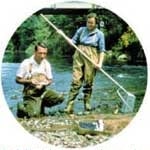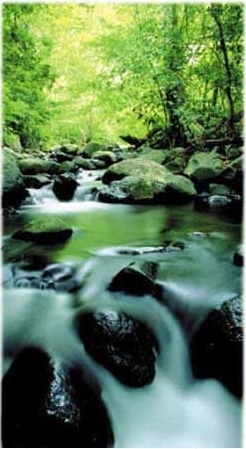The Road to Independence

The intellectual roots of the Stroud Water Research Center trace back to 1947 when the Academy of Natural Sciences of Philadelphia created the Department of Limnology, dedicated to understanding aquatic ecosystems.
Ruth Patrick, the driving force behind the new department, immediately launched her pathfinding study of the Conestoga Creek in Lancaster County. That study set the standard for future aquatic research. It also laid the foundation for the Stroud Center 19 years later.
The Conestoga study foreshadowed both the mission and the philosophy of the Stroud Center. And when, at her urging, the Academy chartered its new laboratory in rural Chester County, Dr. Patrick brought to it her reputation, her access to funding and her extraordinary work ethic. It was largely through her influence, for example, that the Center secured the five-year Rockefeller grant that brought the financial stability and scientific repute that ensured its future prosperity.

Over the next 33 years, the Stroud Center evolved from a small outpost on the banks of a small stream into a major research and education facility with 23 full-time employees and a multi-million dollar annual budget. It grew from a makeshift laboratory over a garage into a multi-building campus.
Its research progressed from a focus on one tributary of White Clay Creek to programs that span the globe, and its scientists brought the institution a worldwide reputation for excellence. Finally, the Stroud Water Research Center helped spawn a rural outpost of its own — the Maritza Station in Costa Rica’s Guanacaste National Park.
None of this could have happened without the support of the Academy, which incubated the Stroud Center and nurtured its growth. Above all, the affiliation with one of the oldest and most respected scientific institutions in the Western Hemisphere provided the Stroud Center with a mantle of credibility that proved invaluable to the fledgling organization.
By the 1990s, however, the Stroud Center had reached a critical stage in its evolution.
Its growth, fiscal independence and physical distance from the Academy had given it unusual autonomy. The Academy had made clear from the outset that the Stroud Center must take full responsibility for its economic survival, and over the years the Stroud Foundation and family, with the help of Dr. Patrick and others, established several funds dedicated to its well-being. In addition, the quality of the staff’s scientific work attracted significant funding from research grants and from long-term contracts with public agencies and private corporations. In the 1990s the Center set up its own education department and a development office that quickly embarked on a capital campaign for construction and endowment.
The logical next step came on April 22, 1999, when the Academy’s trustees authorized the Stroud Water Research Center to become a separate non-profit corporation. On October 1, 1999, the Stroud Center became a fully independent organization.
Learn More About Our History
The Beginning | The Watershed | Landmark Research | Art and Science | Road to Independence | Building Blocks
Celebrate Stroud Water Research Center’s history — from its humble beginning in Joan and Dick Stroud’s garage to a world-renowned freshwater research institution — with our anniversary book, The First Fifty Years.
